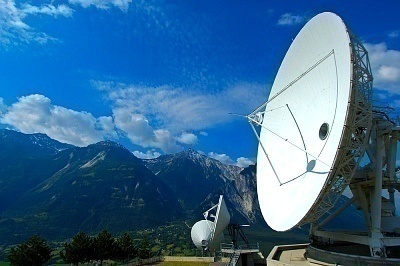FSK (Frequency Shift Keying) is also known as frequency shift modulation and frequency shift signaling. Frequency Shift Keying is a data signal converted into a specific frequency or tone in order to transmit it over wire, cable, optical fiber or wireless media to a destination point. The history of FSK dates back to the early 1900s, when this technique was discovered and then used to work alongside teleprinters to transmit messages by radio (RTTY). But FSK, with some modifications, is still effective in many instances including the digital world where it is commonly used in conjunction with computers and low speed modems. In fact, the contributions of FSK are much more far reaching. For example, the principle of FSK has laid the path to the development of other similar techniques such as the Audio Frequency Shift Keying (AFSK) and Multiple Frequency Shift Keying (MFSK) just to name a few.
In Frequency Shift Keying, the modulating signals shift the output frequency between predetermined levels. Technically FSK has two classifications, the non-coherent and coherent FSK. In non-coherent FSK, the instantaneous frequency is shifted between two discrete values named mark and space frequency, respectively. On the other hand, in coherent Frequency Shift Keying or binary FSK, there is no phase discontinuity in the output signal.

In this digital era, the modulation of signals are carried out by a computer, which converts the binary data to FSK signals for transmission, and in turn receives the incoming FSK signals and converts it to corresponding digital low and high, the language the computer understands best.
There are Frequency Shift Keying standards, used in various countries across the globe. They are the ETSI FSK, Bellcore FSK, BT (British Telecom) FSK and CCA (Cable Communication Association) FSK. The Bellcore standard is used in United States, Australia, China, Hong Kong and Singapore. It uses the 1200 baud Bell 202 tone modulation and the first bit of data is transferred after receiving the first ring tone.
The BT FSK or British Telecom Frequency Shift Keying is an original standard that was developed by the British Telecom. This standard wakes up the display with a line reversal and transmits the data as CITT V23 modem tones, a format similar to MDMF. British Telecom itself uses this standard as well as some wireless networks such as the late Lonica and some cable companies as well. More details about the British Telecom Frequency Shift Keying standards can be obtained from the document Designing Caller Identification Delivery Using XR-2211 for B.T. or the Supplier Information Notes (SINs) 227 and 242.
In Cable Communication Association standard, data is sent after a short first ring, either as Bell 202 or V23 tones. Here the transport layer is more like Bellcore even though the data format looks much like British Telecom’s, because of this, European or North American kits are more likely to detect it.
The basic principle of Frequency Shift Keying is at least a century old. Despite its age, FSK has successfully maintained its use during more modern times and has adapted well to the digital domain, and continues to serve those that need to transfer data via computer, cable, or wire. There is no doubt that FSK will be around as long as there is a need to transmit information in a highly effective and affordable manner.




Bob
How do I convert an image to MFSK format? What software is needed.